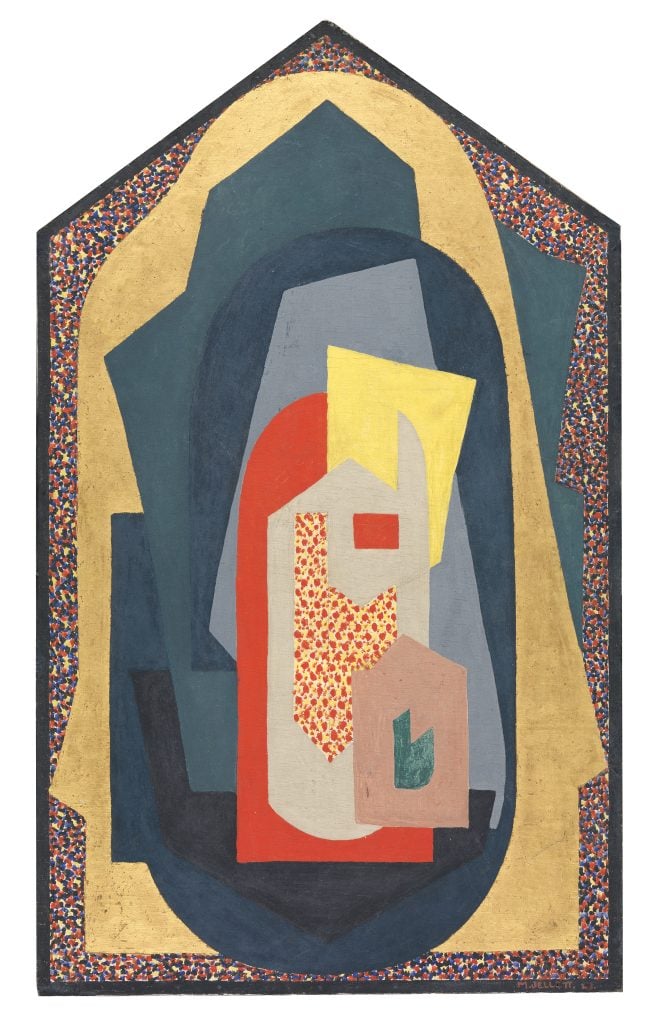Museums & Institutions
The Permanent Collection: The Woman Who Brought Modernism to Ireland
Museum director Caroline Campbell on Mainie Jellett's pioneering abstractions.

Mainie Jellett, Decoration (1923)
National Gallery of Ireland
Chosen by: Caroline Campbell, director
Mainie Jellett could do pretty much anything she wanted to; she was incredibly technically skilled. She studied in Dublin with William Orpen, in London with Walter Sickert, and in Paris with the Cubist painters André Lhote and Albert Gleizes. She’s sometimes been said to have merely been a student of others—but she had her own incredible vision.
When she returned to Ireland from Paris in 1923 and exhibited abstract works like Decoration, she was castigated—partly because she was a woman, but also because this was so unlike what people were doing at the time. Really, Jellett marks the start of Modernism in Irish painting.
There is something so personal, so unusual about the mark-making in Decoration. You have, for instance, this very busy outer layer that recalls the late work of Georges Seurat. She’s very interested in patterning, in texture, the materiality of the object, in ways that I don’t think are typical of Cubism. She was constantly questioning what she had been told and what she saw around her.
The work is often said to recall the format of paintings of the Virgin and Child. Some writers have pointed to Fra Angelico, after all Jellett’s choice of medium is tempera on wood, the material of the early Italian painters. There’s a real connection between modernism and what was then called the art of the primitive Renaissance—a radical thing to be studying in the 1910s.
Jellett had a strong sense that artists should be involved in civic life. I think that was why she staged these radical exhibitions in Dublin in the 1920s, involving herself in shaping attitudes for exhibiting living art, outside the academy. In later life, she arrived at a much stronger sense of religious faith, returning to a more figurative style. She always stuck to her guns.
We’re hoping to stage an exhibition on Jellett and her great friend, Evie Hone, at the museum here, and I’d love to find a way for it to travel outside Ireland—to find ways in which the story can become not just a story of Ireland, but one which speaks to a broader, international history of art.
—National Gallery of Ireland director Caroline Campbell, as told to Samuel Reilly
What artwork hangs across from Mona Lisa? What lies downstairs from Van Gogh’s Sunflowers? In “The Permanent Collection,” we journey to museums around the globe, illuminating hidden gems and sharing stories behind artworks that often lie beyond the spotlight.





